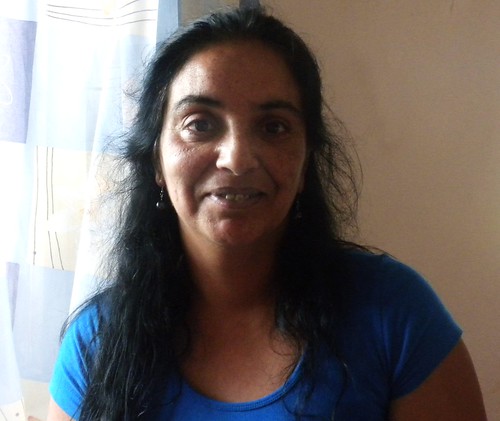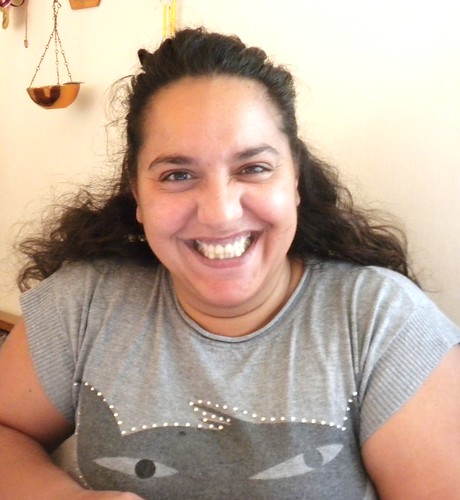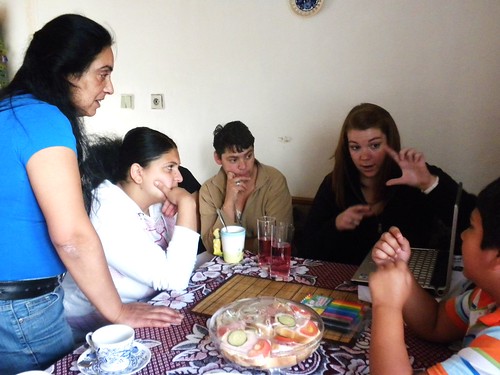The culture of the Roma people has often been used as a tool for exclusion. It is a method that continues to make sure that the Roma people are consistently seen as the “other,” an aberration from mainstream society. An extreme example of this is seen in their traditional practice of having many children. In order to “rectify” this cultural norm, coercive sterilization was used to ensure that Roma families would only have as many children as was considered “normal.”
Roma women are faced with multiple facets of this “othering” process. As women, they are the “other” (a term first used in feminist literature by Simone de Beauvoir). This compounded method of discrimination means that the women of Roma society are often at the bottom in terms of accessing needs that are already poor in Roma communities.
For example, one of the four main tenets of the Decade of Roma Inclusion is Employment. Roma women are even less likely than Roma men to find employment, and as women they are likely to earn less than their male counterparts. (In this study, the employment rate for Roma women is 31%, compared with 62% of non-Roma women in the Czech Republic. Compare this to Roma men, whose employment rate is 63% compared to the non-Roma average of 95%)
When coming to Prague, The Advocacy Project left me with the mission to find a group of Roma women to create a quilt to display not only their struggles as a Roma woman in Czech society, but also to show their culture. To use their traditions, histories, and art as tools of inclusion rather than exclusion. The process of finding a group of women was not easy. It has been a long process of going back and forth. Thinking I found one group and then realizing the setbacks. Phone calls, meetings, blank stares from me as Ivan spoke in rapid Czech while chain smoking. It was all very overwhelming. But, as always, things turned around, and this is where the story of quilting for advocacy in the Czech Republic truly begins…
With the help of the fabulous (yet very tired) Ivan Vesely, I was put in contact with Emilie Horačkova, a Roma woman who has a long history of social activism and craftsmanship. She was from the town of Mimoň, a small community about eighty kilometers outside of Prague. She introduced me to her daughter, Emilie Zigova, who has hence become our unofficial translator, and we organized a meeting to discuss the process of creating the quilt.

47 year old Emilie Horačkova has recruited a number of Roma women from her community to be involved in the quilting project.

31 year old Emilie Zigova is our unofficial translator and has taken over this project as the coordinator. She is also a gorgeous bride to be! Congratulations Emilie!
Before meeting with the Emilie’s (as I lovingly refer to this amazing mother-daughter duo), the fantastic Kerry McBroom arrived in Prague. A former Peace Fellow who worked in Sri Lanka and the coordinator of the Roma quilt in Strasbourg, France, she proved to be essential in helping me not only with organizing the quilt, but in maintaining my sanity.
We agreed on meeting the Emilie’s in Mimoň on July 1st. The bus ride took about two hours, and Emilie the elder met us at the bus station and took us back to her flat. There we met her daughter and her grandson, who also speaks wonderful English. We discussed the potentials of the quilt, with Kerry speaking of her experience in France. All in all it was an extremely successful, if rather unremarkable, day.
The next meeting was this past Tuesday. Kerry came with me again, and once again we took the early bus. (It left at the delicate hour of 6:50am, meaning we had to awake at 5:00am. Not a pretty sight.) This time we came equipped with markers and paper to help the women brainstorm ideas for their panel. The Emilie’s had gotten in contact with eight women, two of which were unable to come to the initial meeting that Tuesday. Despite this small setback, the brainstorming session went incredibly well. Although I’m sure their panels will tell an important story, their lives are what I am truly interested in.
The women we talked to typically come from large families, with anywhere from five to ten siblings growing up. Many did not finish school past the age of fourteen. They married young, and many were having children by the age of 17 or 18. I asked why they didn’t go to school – it was such a foreign concept to me. They told me that the schools they had were awful, “it is not a good place for school here.” Emilie told me. “It is better to find a man and get married.”

I explain the quilting process to a group of women, including from left to right: Emilie Horačkova, Lenka Dirdova, and Renata Dufkova.
Only two of the women attended secondary school – Emilie Horačkova, and her daughter, Emilie Zigova. Emilie Zigova even attended three years of University before dropping out because of the stress of the constant racism she faced as the only Roma student in her class. Emilie is an outlier in this tight knit community, she is 31 years old and is getting married this summer. For people in the US, this would not be a rarity, but in her community 31 is considered quite old to be getting married.
The women told stories which made me marvel at the cruelty of people. When they would go into stores they would overhear managers telling employees, “Watch that gypsy. They like to steal.” If they would pass a mother and her baby, the mother would tell her children, “Don’t let that dirty gypsy touch you.”
Emilie’s grandson reminisces about his time in Canada, “They don’t look at us there. They actually smile. Here they will smile at your face and then talk about you as soon as you turn around.”
These are the stories that I hope will influence change at the European level. Maybe, one day, the smiles these women will see won’t be fake.
Posted By laura jones
Posted Jul 7th, 2011


3 Comments
Chelsea
July 7, 2011
Hi Beth, loved reading this… so interesting. I know a little bit about the Roma people’s situation, but not very much. What you wrote about the way these individuals are treated reminds me of the caste system here in Nepal. It seems like every community/country has a hierarchy that results in exclusion, and puts people at a disadvantage from the day they are born. Is there any kind of program that provides incentive or support for these women to continue their studies? (I am guessing no, but I haven’t read your other blogs, so I might have missed something…)
Beth Wofford
July 16, 2011
Hi Chelsea!
It really does seem a bit like the caste system (granted, I don’t know a lot about that situation either!). As far as I know, there is not strategy in place for any Roma to continue their studies, let alone women in particular. The Decade of Roma Inclusion and other International Organizations have pushed for a scholarship program for talented Roma students, but it has been met with resistance from both “sides”. Many Roma activists want all children to receive scholarships, and therefore deplore the idea of giving them only to talented students, and the general population in the government seems to resist giving scholarships to an individual due to their ethnicity no matter how talented they are. It would be interesting to see what a program specifically targeting women would do to raise levels of Roma education here!
-Beth